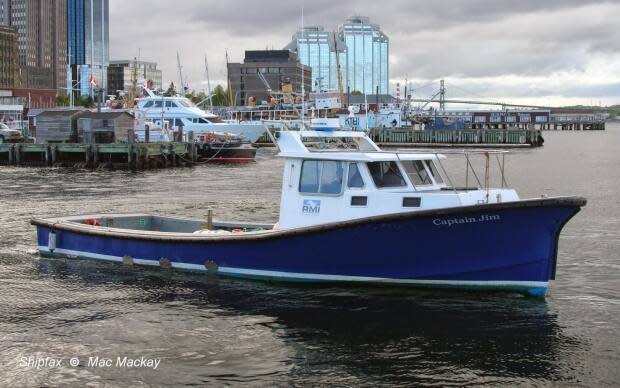Fatal 2019 ship sinking near Halifax caused by modifications made to vessel

A fatal 2019 ship sinking near the mouth of Halifax harbour was caused by modifications made to the vessel that compromised its stability and resulted in it taking on water faster than it could expel it, the Transportation Safety Board (TSB) said Thursday.
The 13-metre Captain Jim, a Cape Islander-style lobster boat that was used in part for taxiing people back and forth to other vessels, was heading to Eastern Passage in the early hours of Jan. 29, 2019, after picking up a passenger from an oil tanker anchored outside of the harbour.
An investigation by the TSB found water began entering the ship through a port that's meant to get rid of water on the ship's deck. However, pumps meant to expel water from the ship couldn't keep pace. At 2:07 a.m. AT, the Captain Jim became disabled about 5.2 kilometres from its destination.
There were two crew members and a passenger on board the vessel. The sea was calm at the time, with winds about 20 knots and 1.5-metre waves.
Before the ship sank, the captain and a passenger managed to board a life-raft and were rescued by a pilot boat. The second crew member, 24-year-old Max Hinch, died on the vessel. Divers recovered his body from inside the ship's wheelhouse later that day.

The TSB said in a news release that while the ports installed on the ship were made to allow water to drain overboard, "this reduced the vessel's freeboard and rendered it vulnerable to water ingress."
The investigation found that shortly after an alarm sounded and water was seen accumulating on the deck, the captain — who had 25 years of experience at sea — attempted to return to calmer waters.
"This experience did not provide him with the technical proficiency needed to fully understand the stability implications of the water ingress and therefore appreciate the urgency of the unfolding situation," said the release.
The TSB said the ship's owner, RMI Marine, did not have a way of assessing how the stability of a vessel would be affected by making modifications to it.
"If vessel modifications are not adequately assessed for their safety implications, there is a risk that those modifications may unknowingly compromise a vessel's stability, affecting the safety of the vessel's crew and passengers," said the release.
Company changed policies
After the sinking, RMI Marine changed some of its policies, including:
Ensuring that only certified personnel operate its vessels.
Requiring that vessels be inspected and function-tested quarterly.
It remains unclear why Hinch wasn't able to make it to the life-raft with the other two people on board.
MORE TOP STORIES

